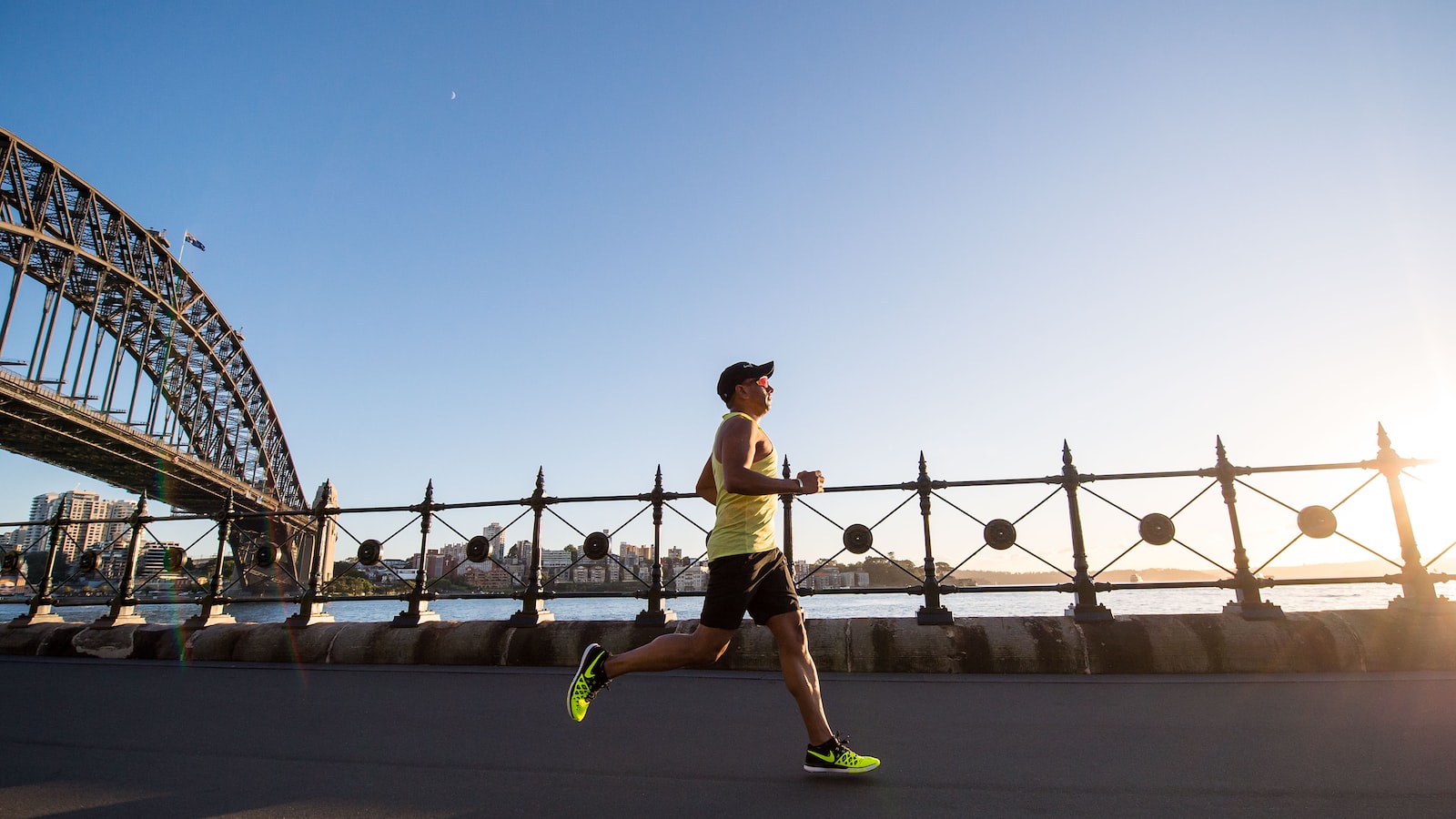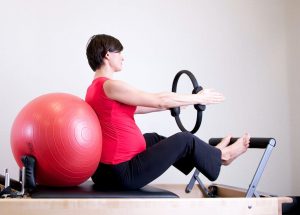
Pilates: An Overview of Its Fitness Components
Pilates is one of the most popular forms of exercise in the world, with millions of people across the globe engaging in this form of exercise every day. This type of fitness regime is often seen as a great way to build strength, flexibility, and balance, but what does Pilates really involve and what are its components? In this overview article, we’ll take a look at the basics of Pilates and some of the key fitness benefits that it can provide.
List of Content
- 1. What is Pilates?
- 2. Benefits of Pilates
- 3. Pilates Equipment
- 4. Types of Pilates Workouts
- 5. Safety Guidelines for Pilates
- 6. Get Started with Pilates Today!
- You Ask, I answer

1. What is Pilates?
Pilates is a type of physical exercise focusing on improving posture, muscle control, strength and flexibility. It was originally developed by German-born athlete and physical trainer, Joseph Hubertus Pilates. He initially called his system Contrology, but it’s now widely known as Pilates.
The fundamentals of Pilates involve using the body’s own resistance to build strength and stability. The exercises involve slow, controlled movements, and focus on integrating the mind and body. Through these movements, the body is trained to have improved control of its posture and movements.
The primary objectives of Pilates are to improve flexibility, strength, balance, body control, posture, and breathing. Pilates can accommodate participants’ needs, from those wanting a gentle, restorative workout to participants who want more vigorous intensity. It also emphasises alignment, centring, and flowing movements.
At its core, Pilates is a series of exercises operating under the principles of concentration, control, centring, flow, precision, and breath. Whether it’s mat Pilates, Pilates Reformer or a combination of techniques, the ultimate goal is achievement of a healthy, strong and flexible body.
- Concentration: Learning to focus, think, and connect movements with breath
- Control: Ability to move one’s body in a deliberate and precise manner
- Centring: Exercises originating and ending at the centre of the body
- Flow: Moving through the exercises with ease and grace
- Precision: Intentional, deliberate movements for effective outcomes
- Breath: Coordinating the movements with intentional breath patterns

2. Benefits of Pilates
Improved Core Strength
Pilates is an excellent way to develop strong core muscles, including the abs, hips, and lower back. Having strong core muscles helps improve posture, prevent injury, maintain balance, and make it easier to do everyday activities such as carrying groceries or pushing a lawn mower. Plus, having a strong core can make other exercises, such as weightlifting, easier and help to build more total muscle.
Improved Flexibility
Pilates exercises are often focused on lengthening and stretching muscles to improve flexibility and range of motion. This can make everyday activities, such as gardening, easier and less prone to injury. Improved flexibility can also help those who suffer from lower back pain or muscle tightness.
Improved Balance and Coordination
Pilates exercises are designed to help improve balance and coordination in the body. Many moves require significant focus and concentration, as well as steady breathing and precise control of the body’s movements. These skills can come in handy for everyday activities from going to the gym to playing a round of golf.
Better Mental Focus
Pilates workouts can also be beneficial to your mental well-being. By focusing your attention on your breathing and movements, you can shut out the noise and stress in your day-to-day life. The controllable “breaks” in your day can also help restore energy if you’re feeling mentally and/or physically exhausted.
3. Pilates Equipment
Pilates has seen its surge in popularity as of late. With its benefits well known and its low intensity nature, pilates has become one of the world’s most practiced forms of exercise.
Most people know that one of the major benefits of practising pilates is the various pieces of you can use to work out. aids in providing stability and assists with helping users keep proper form and achieve the desired results.
- Reformer – A slender platform with low and high pulley systems providing greater precision and control than on the mat.
- Cadillac – Often referred to as a ‘rack’ because it looks like a large rectangle with attached bars, hooks, and various lever arms.
- Wunda Chair – A 6-foot chair with two large pedals, which are used for balance, flexibility, and strength.
- Barrel – A beautiful piece of apparatus used to stretch and massage the spine.
There are other pieces of you can find in most pilates studios, but the reformer, cadillac, wunda chair and barrel are by far the most commonly used pieces of equipment.
So if you have goals of deep core engagement, improved posture, flexibility, strength, and overall better physical health, there’s no denying the great benefits of using .
4. Types of Pilates Workouts
Pilates is a method of body conditioning developed by Joseph Pilates in the early 20th century. It’s renowned for its low-impact, core-strengthening abilities, and there are various approaches you can take to get the most out of your pilates workouts. Here are some of the most popular types of pilates you can try:
- Mat Pilates: A popular form of pilates which uses a mat, Pilates-specific props such as weights and foam rollers. It helps to build strength, balance, and flexibility, and it focuses on precise movements of the body to target specific muscle groups.
- Reformer Pilates: This type of pilates uses a special machine known as a ‘Reformer.’ It can be used to add resistance to an exercise, allowing the body to train to its maximum capacity. This type of pilates focuses on stability, suppleness, and strengthening the entire body.
- Chair Pilates: Chair Pilates involves the use of a chair as an exercise platform. It helps to target the deep core muscles – an area which is often overlooked in exercises – and improves coordination, strength, and balance all at the same time.
- Barre Pilates: Barre Pilates combines elements of pilates, yoga, and barre ballet. It’s highly effective at strengthening and toning the body by using ballet-inspired exercises. The exercises are designed to help with building balance, core strength, and muscle tone.
All forms of pilates are effective at improving muscle strength and flexibility. Mat Pilates is considered to be the best form of pilates for beginners as it allows them to move at their own pace, and it focuses on precise exercises which help to improve core strength. Reformer Pilates, Chair Pilates, and Barre Pilates can be more advanced exercises depending on the level of the practitioner, and they are excellent ways of improving overall strength and balance at the same time.
Pilates is an effective way of conditioning your body, and there is a type of pilates for everyone – from beginners to experienced practitioners. It’s important to speak with a health professional or Pilates instructor before starting any type of Pilates exercise to ensure you are performing the exercises correctly and getting the most out of your workouts.
5. Safety Guidelines for Pilates
Whether you’re a newsholden Pilates enthusiast or beginner, it’s essential to familiarize yourself with the safety principles to ensure a safe and comfortable practice. Most injuries are caused by incorrect alignment or mechanical issues, so let’s dive into some vital safety guidelines on performing Pilates correctly.
Condition Your Muscles
The best way to prevent injuries is by conditioning your muscles so they are strong enough to bear the weight of your body during Pilates. You can do this by performing dynamic warm ups to get your body moving and loosening tight muscles.
Check Your Form
For optimal results and safety, it’s important to watch your form while performing each exercise. Make sure to check your alignment, where your feet and hands are pointing and the pelvis for the correct positioning.
Start Small
Expect to feel a burn and challenge your muscles when doing Pilates, but don’t overdo it. Start with the beginner’s version of an exercise and slowly perform the regular version as your strength and alignment improves.
Listen to Your Body
Any activity that requires movement can cause discomfort, so it’s important to never push yourself beyond what you can handle. A slight burning sensation is normal, however always pay attention to any pain and stop if something doesn’t feel right.
- Condition Your Muscles
- Check Your Form
- Start Small
- Listen to Your Body
By following these safety guidelines, you can optimize your Pilates experience and make sure you derive maximum benefits while keeping your body safe and comfortable.
6. Get Started with Pilates Today!
Pilates offers countless benefits, and with the right guidance and dedication, you can reap them all.
Here are some tips on how to get started practicing Pilates:
- Find a good Pilates instructor. Enhancing your Pilates practice does have a bit of a learning curve. Seek out a knowledgeable instructor who can provide guidance during your workouts.
- Start where you feel comfortable. Practice your form with basic Pilates exercises to get comfortable with the movements.
- Don’t be intimidated. Pilates workouts can look very challenging, but if you start small and consistent you can achieve great results.
- Be patient and focus on your practice. Have realistic goals and expectations. Pilates takes time, practice, and dedication.
Thanks to its low impact, Pilates is one of the best exercise forms for people of all ages and fitness levels. Have fun and challenge yourself throughout the practice.
Ready to get started? With these tips, you can reap the many benefits of Pilates and achieve the level of strength and flexibility you deserve.
You Ask, I answer
Q: What is Pilates?
A: Pilates is a physical fitness system that emphasizes core strength, posture, balance and flexibility. It was developed by Joseph Pilates in the early 20th century and originally focused on overall body conditioning.
Q: What kind of exercises does Pilates involve?
A: Pilates involves a variety of exercises which focus on the body’s core musculature, including abdominal, back, and gluteal muscles. Many exercises involve the use of resistance bands or other lightweight equipment, such as soft foam balls, and exercise mats.
Q: Why is Pilates beneficial?
A: Pilates is beneficial as it improves overall strength and flexibility, as well as improving posture and balance. It is designed to both challenge and condition your body while ensuring proper form and alignment. Additionally, Pilates helps to sharpen your focus and reduce stress.
Q: What are the different types of Pilates?
A: There are basically two types of Pilates: Mat Pilates and Reformer Pilates. Mat Pilates is usually performed on the floor using your own body weight and a range of equipment. Reformer Pilates uses specialized equipment such as the Pilates Reformer to challenge your muscles and provide a more intense workout.
Pilates is a unique exercise system that can provide a full body workout. It is gentle enough for anyone, from the beginner to the experienced athlete. With its roots in physical and spiritual wellbeing, Pilates leverages the principles of body, mind, and spirit to create an exercise that moves the body from head to toe. This overview gave an insight into how Pilates can benefit your fitness goals and help you achieve the physical and mental benefits of a complete exercise system.


